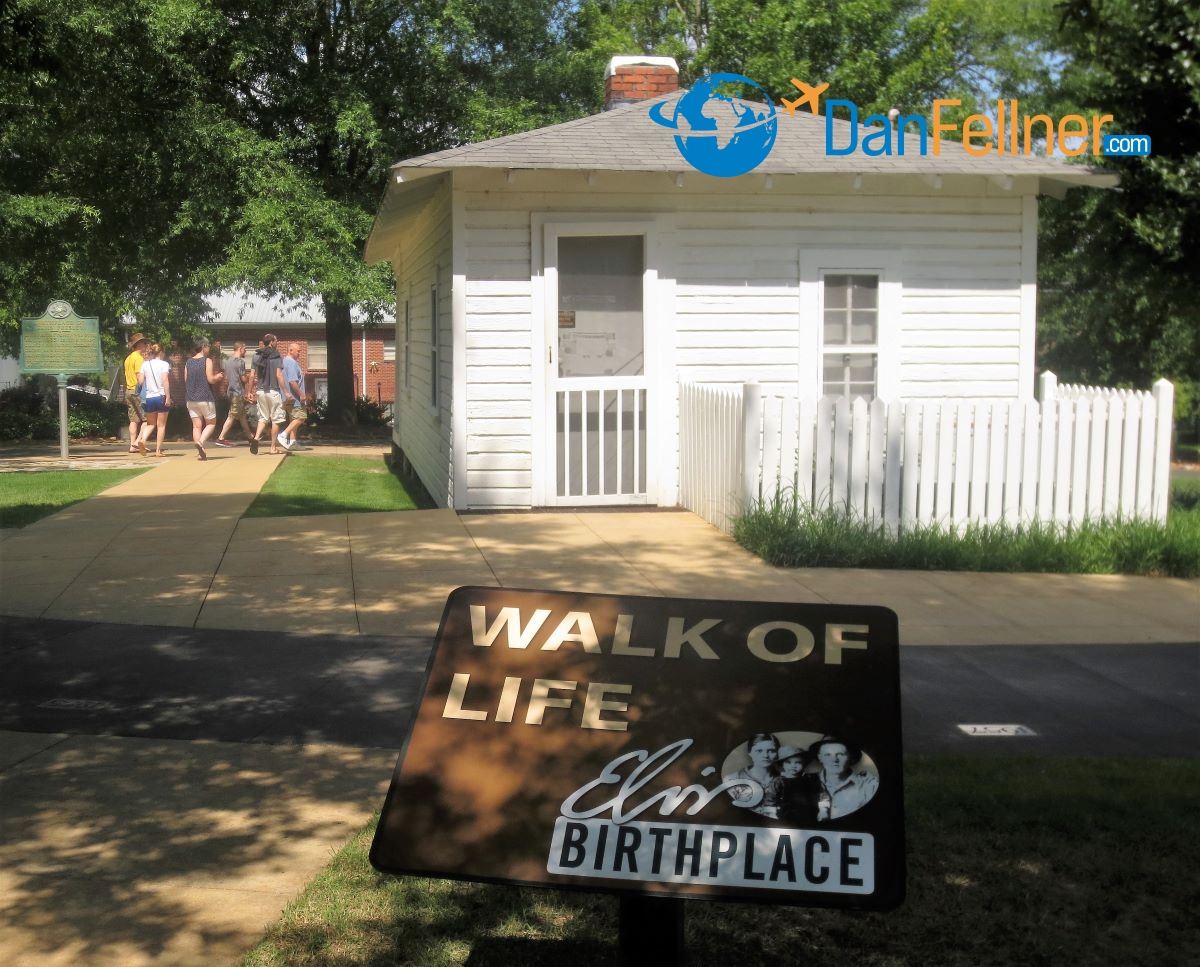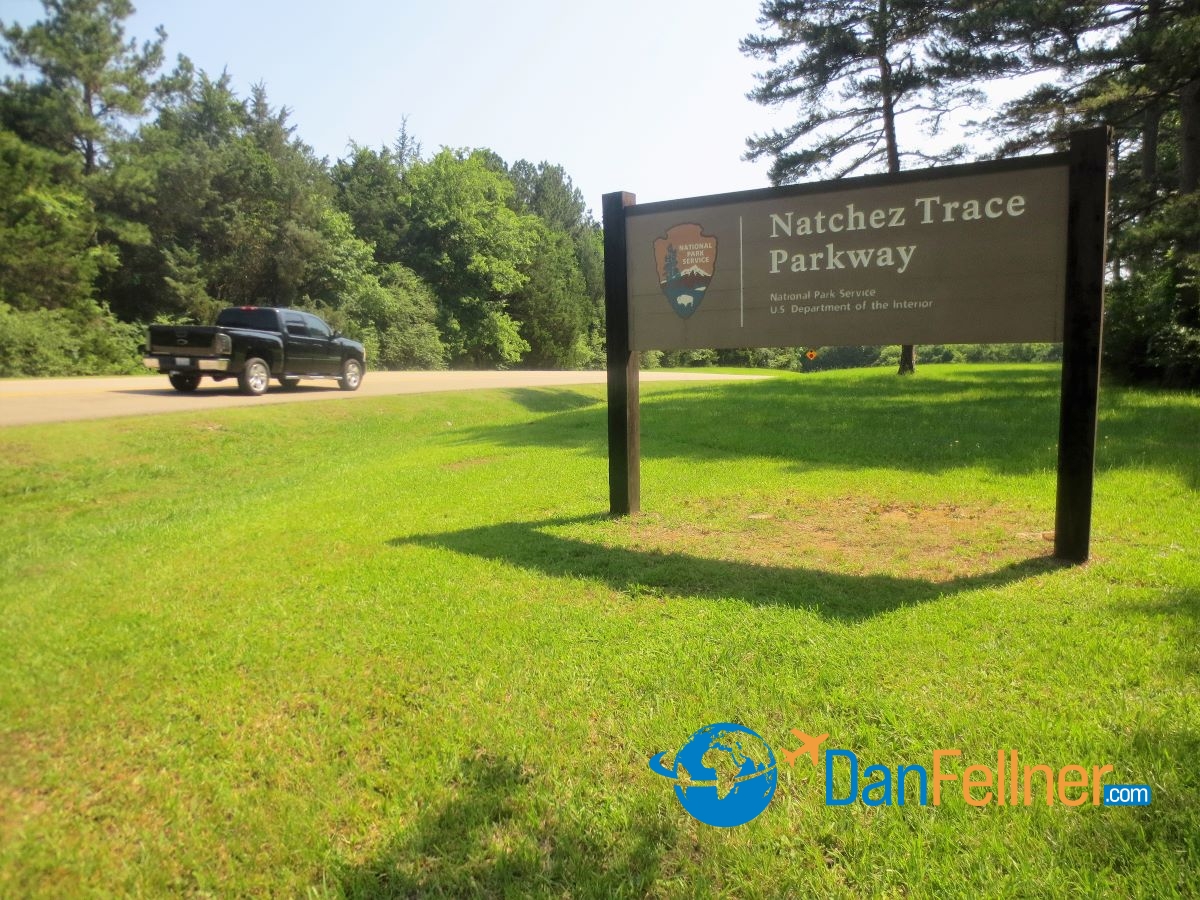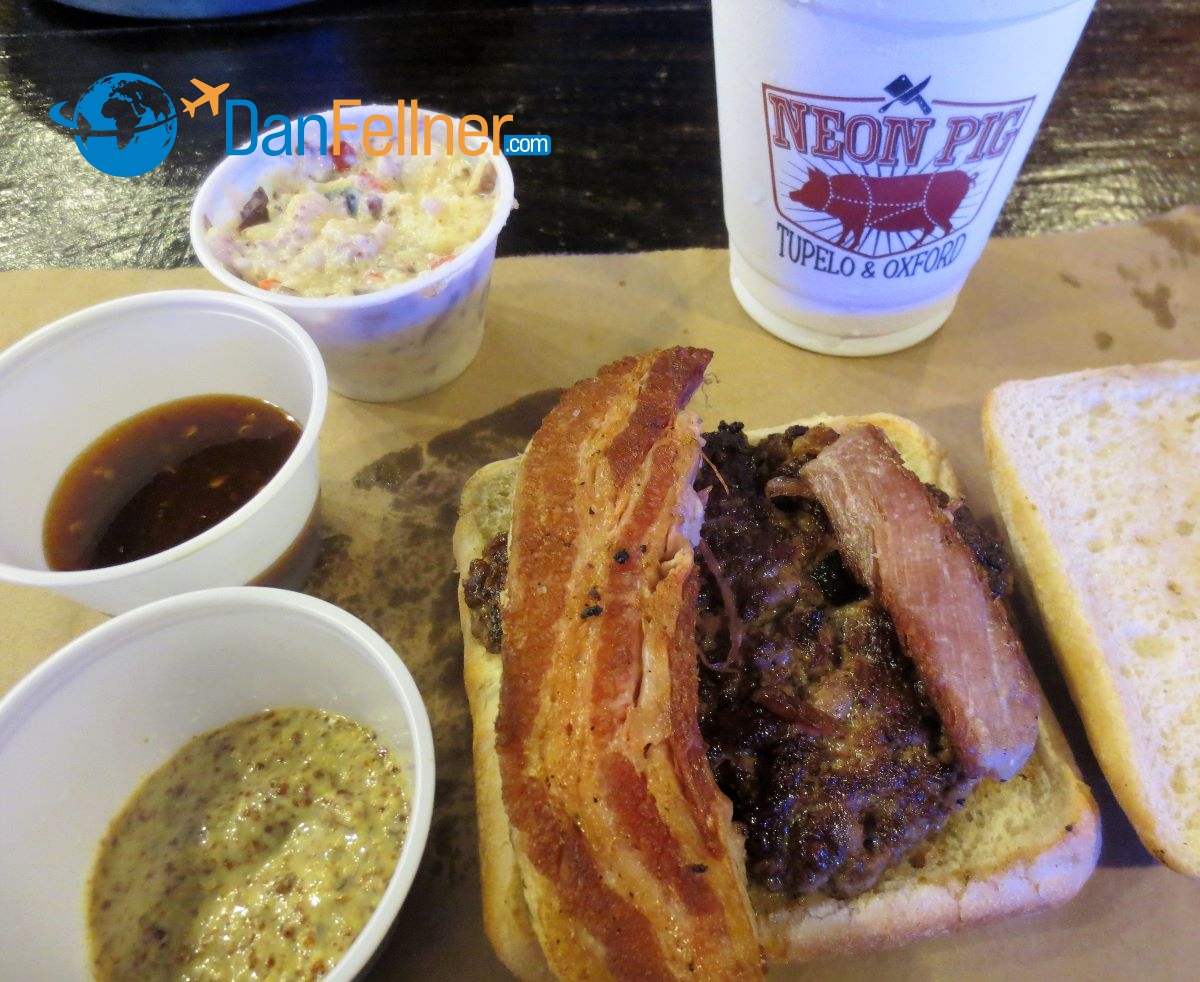Elvis Presley’s Mississippi hometown now offers Elvis-themed bike tours
The Arizona Republic — July 15, 2018
TUPELO, Miss. – “Lord almighty, I feel my temperature rising.”

A street mural of Elvis Presley in downtown Tupelo.
I was pedaling my 10-speed hard on a sweltering June day through the streets and dirt backroads of this town in the hills of northeast Mississippi and the lyrics of my favorite Elvis Presley song – “Burning Love” — kept running through my head.
“Help me, I’m flaming, I must be a 109.”
Sweat-drenched shirt aside, I was thoroughly enjoying myself as I explored the sites related to the formative years of one of the most significant cultural icons of the 20th century.

The modest, two-room house where Elvis Presley was born in Tupelo, Mississippi.
Elvis Aaron Presley was born in Tupelo in 1935 and lived the first 13 years of his life here before moving to Memphis with his parents. Today, 41 years after Elvis’ untimely death at his Graceland mansion in Memphis, Tupelo attracts 50,000-100,000 Elvis-loving tourists a year. Many arrive on tour buses from Memphis, a 90-minute drive away.
But for those who want less of a cookie-cutter experience you get sitting on a bus tour, there’s now another alternative. In May, Tupelo’s Convention and Visitors Bureau inaugurated a self-guided, Elvis-themed bike tour that takes visitors to 13 marked sites throughout the city tracing the King of Rock ‘n’ Roll’s upbringing.

Inside the home where Elvis lived the first two years of his life in Tupelo.
If you can endure the heat, it’s an inexpensive and flexible way to see the sites at your own pace and work off some pounds from the tasty – but fattening – southern comfort food in which you’re likely to indulge.
For $12, you can have a bicycle delivered in the morning directly to your hotel and then have it picked up at the end of the day. For maps, descriptions of all the sites, and to order a bike, visit tupelo.net.
So far, the response has been better than the city hoped.

Many visitors to Tupelo arrive on tour buses from Graceland in Memphis, a 90-minute drive away.
“Cycling is such a big thing right now and people want to explore a city in a different way,” says Jennie Bradford Curlee, director of public relations for the Tupelo Convention and Visitors Bureau. “Anyone can get in a car and see all these sites. But you’re exploring more like Elvis would have as a child.”
Fittingly, I began the bike tour by pedaling a mile east from my hotel to the humble, two-room dwelling where Elvis was born and lived the first two years of his life. His parents struggled financially and the family moved several times during Elvis’ 13 years in Tupelo.
The house, built by Elvis’ father, grandfather and uncle in 1934, is the centerpiece of a 15-acre park that includes a “Walk of Life,” a series of concrete blocks that traces each year of Elvis’ life. Next door to the house sits the Elvis Presley Museum, which contains memorabilia related to Elvis’ legendary career, most of which was collected by a family friend.
The complex also includes a transplanted Assembly of God church that Elvis attended as a boy. It was here that Elvis was first exposed to the rich, Southern gospel that became a staple of his musical repertoire. Inside, visitors can experience a multi-media presentation of a 1940s Pentecostal church service, complete with an actor playing a young Elvis singing in front of the congregation.

Elvis’ childhood church in Tupelo, where he was first exposed to the rich, Southern gospel that became a staple of his musical repertoire.
From the birthplace, I rode down some dirt roads to visit the Mud Creek Swimming Hole, where Elvis and his friends would sneak a dip so their mothers wouldn’t know they were swimming unsupervised.
By then, it was lunchtime. I pedaled to Johnnie’s Drive-In, where Elvis used to come with his friends after school for a cheeseburger and RC Cola. It’s still an operating restaurant today and was packed, mostly with locals. I had to wait for a family to finish its meal before moving into the popular “Elvis Booth,” where Elvis was once photographed.

The “Elvis Booth” at Johnnie’s Drive-In, where Elvis used to eat cheeseburgers and sip RC Cola after school.
Yes, I ordered a bottle of RC Cola. While it was a bit too sugary for me, I figured if it was good enough for The King, it was good enough for me.
Two blocks away, I visited Lawhon Elementary School, which Elvis attended from 1941-1946. A decorative guitar sits out front, in honor of the still-functioning school’s most famous student.

Lawhon Elementary School, which Elvis attended as a child in Tupelo.
After reaching stardom, Elvis returned to Tupelo in 1956. His concert in a park in front of City Hall is immortalized in “The Homecoming Statue,” based on a photo in which Elvis reached into the crowd to touch hands.

The iconic “Homecoming Statue,” based on a photo of Elvis performing in Tupelo in 1956.
Perhaps my favorite stop on the journey was at the Tupelo Hardware Co. on Main Street in the city’s historic district. Founded in 1926 by the same family that still owns it, Tupelo Hardware may be the only hardware store in the country that employs a full-time docent.
“I don’t know anything about hardware,” admits “Elvis Docent” Connie Tullos. “Don’t want to know anything about hardware.”

Elvis got his first guitar at The Tupelo Hardware Co.
What Tullos does know about is the nuts-and-bolts behind Elvis’ first guitar, which his mother Gladys bought him for his 11th birthday. The two came into the hardware store to shop for Elvis’s present. The story goes that Elvis wanted a rifle or bicycle, but his mother refused. A store employee then brought out a guitar and handed it to Elvis.
“He took the guitar,” says Tullos. “And the rest is history.”

Tupelo is the headquarters of the Natchez Trace Parkway, a scenic road that spans 444 miles from Nashville, Tenn., to Natchez, Miss.
For those wanting a break from the Elvis-related sites, Tupelo is the headquarters of the Natchez Trace Parkway, a historic travel corridor used by Native Americans, European settlers and soldiers. One of the prettiest stretches of road in the country, the parkway spans 444 miles from Nashville, Tenn., to Natchez, Miss.
There are numerous walking trails, camping sites and exhibits located near the road, which has a rigidly enforced speed limit of 50 mph. I’m told the Natchez Trace is breathtaking when the leaves are changing color in the fall.
It’s also worth visiting the Tupelo Automobile Museum, which has a collection of more than 100 cars, dating back to a 19th-century steam-powered vehicle. There are cars owned by Liberace, B.B. King, and of course, Elvis. In addition to a 1976 Lincoln Elvis bought and gave to a friend, the Elvis exhibit includes a collection of 33 original movie posters from his movies configured to spell his name.

The Tupelo Automobile Museum has a collection of more than 100 cars, some of which belonged to Elvis, and posters of his 33 movies.
About 38,000 people live in Tupelo, who proudly embrace their favorite son’s impact on pop culture around the world. Seemingly, every store, restaurant or music venue in town has some sort of Elvis reference. For dinner at the popular Neon Pig, a combination butcher shop and restaurant, I ordered the “Belvis Burger.” It was a hamburger topped with pork belly.

The “Belvis Burger” — a hamburger topped with pork belly — served at Tupelo’s Neon Pig.
On my final morning in Tupelo, I stopped at a downtown restaurant for breakfast. On the sign of the Strange Brew Coffeehouse was a clever spin on one of Elvis’ biggest hits: “Can’t Help Falling in Love with Brew.”
I’m guessing The King would have smiled.

© 2018 Dan Fellner



